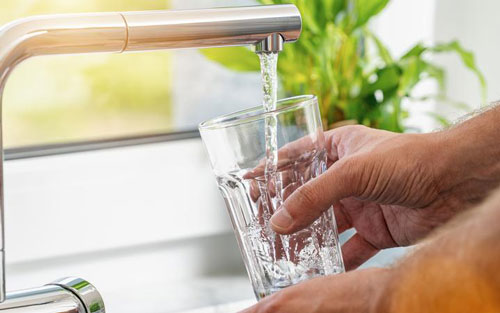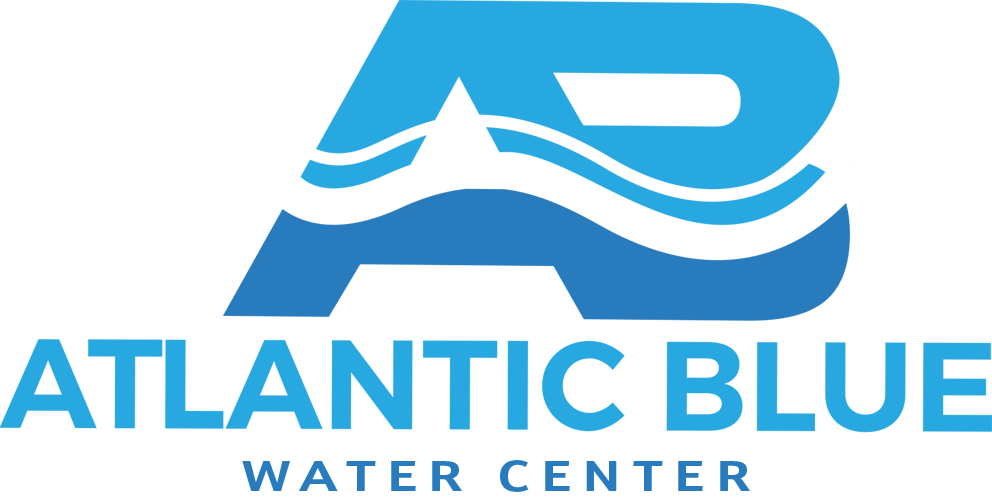If you’re like most Americans, you rely on your drinking water to keep your family hydrated. While we often take water quality for granted, there are instances in which contaminants enter the water supply. While public water treatment sources typically monitor and test drinking water before it’s distributed to households, if you have a local water supply, this might not always be the case.
Other factors can also influence the quality of your water. If there are leaks, piping issues, or any other problems with the water supply chain, dangerous toxins can find their way into your drinking water. At Atlantic Blue Water Center, we’ve made it our mission to improve water quality for our clients.

Common Contaminants
While there is a wide range of contaminants that can enter drinking water, we’re going to take an in-depth look at some of the most prevalent issues.
Microorganisms
Microorganisms, which include viruses, parasites, and bacteria, pose several risks for human health. These types of microorganisms sometimes find their way into the water supply because of sewage leaks, septic tank leaks, leach fields, and other potential contaminators.
Potential Harm: While viruses, parasites, and bacteria can cause potentially fatal diseases in humans, they’re most well-known for their ability to cause gastrointestinal problems. The severity of an infection or illness will depend on the type of microorganism you’re exposed to.
Heavy Metals
Heavy metals are some of the most common contaminants found in drinking water. As heavy metals seep into your water supply from pipes, refineries, nearby businesses, and a host of other sources, they can end up doing serious damage to your body. Some of the most toxic heavy metals include arsenic, chromium, lead, selenium, copper, and antimony.
Potential Harm: If you’re overexposed to heavy metals, the consequences can be fatal. In many cases, heavy metal exposure can lead to organ damage and failure.
Nitrate and Nitrite
Nitrate and nitrite come from a variety of sources. In most cases, these contaminants arise from sewage, fertilizers, and animal waste.
Potential Harm: Nitrate and nitrite are incredibly harmful. They’re especially dangerous for young children – overexposure can cause death.
Organic Chemicals
While organic chemicals are found in many home products, they’re not safe to consume. Common sources of organic chemicals include paints, pesticides, inks, petroleum, and other frequently-used products.
Potential Harm: As with heavy metals, organic chemicals are linked to organ damage and failure.
Other Waterborne Contaminants to Consider
While the above waterborne contaminants are some of the more common contaminants found in water, there are numerous other toxins and substances that you need to consider. Below, let’s look at some other potentially dangerous contaminants that can enter the drinking water supply:
- Radionuclides
- Fluoride
- Uranium
- Silver
- Mercury
- Ammonia
- Aluminum
- Barium
All the above contaminants have the potential to cause serious damage to human health. It’s critical to test your drinking water to ensure that you’re not exposed to potentially harmful toxins.

Remove Waterborne Contaminants Using Atlantic Blue Water Center
If you want to reduce your exposure to harmful contaminants, it’s vital to filter your drinking water. At Atlantic Blue Water Center, we help our customers remove toxins and contaminants from their water supply. If you want to learn about the contaminants currently in your home’s water, bring a sample to our storefront, and our lab technicians will perform an in-depth assessment of its quality.
We provide water treatment solutions for homeowners that want a cleaner water supply. We’re also focused on providing additional education on water treatment, water quality, and issues associated with water contaminants. Call us at (410) 751-9200 if you’d like more information about our services.
